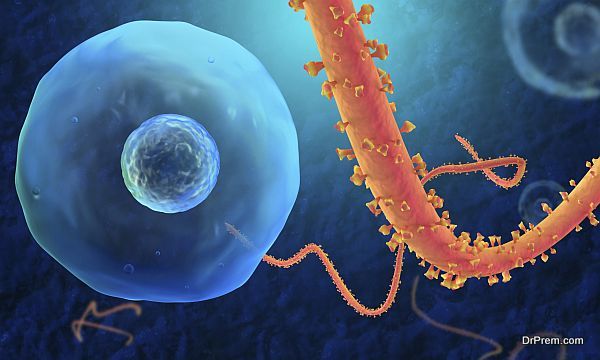Ebola virus disease or EVD is a deadly virus in humans that causes fever and bleeding inside or outside of the body. This disease affects the immunity of an individual, also damages the internal and external organs of the body. This virus is continuously growing in Africa, especially in West Africa. As per records, this deadly virus begun at the end of 2013, but it was detected in March 2014. Then it spread from Liberia, Sierra, Nigeria, to Leon.

Knowing Ebola virus and understanding its effects
This is a unique type of breakout, which first appeared in late 1970s. It affects countries and regions like Nzara, Sudan, Democratic Republic of Congo, and Yambuku. This virus takes its name from Ebola River when it infected the village near the river. First, it infected the animals and then transmitted from them to humans. After that, this infection affected chimpanzees, monkeys, gorillas, and porcupines in Africa.
Ebola spreads in tribal people to village people through direct contact. This can infect people through direct contact of the blood, secretions, other bodily fluids, and organs of infected people or animals. Additionally, a person who has recovered from Ebola can infect other person through his semen. He can transmit the virus up to two seven weeks after recovery from the virus.
This virus can affect an individual in several ways as it can make you very ill. It can lead to problems like headache, fever, diarrhea, and inflammation of the throat. It can cause small white blisters on the skin and can further lead to internal and external bleeding. Each skin opening will bleed and can cause death.

Symptoms of Ebola virus
You can detect if an illness is Ebola or not from various symptoms. The symptoms of Ebola are headache, fever, headache, body pain, intense muscle weakness, and sore throat. An infected person can notice the symptoms between 2 to 21 days. This infection can lead to problems like diarrhea, rashes, vomiting, stomach pain, and failure of kidney and liver. As the condition becomes critical, the infected person may bleed internally, or through ears, mouth, ears, and other body openings.
Treatment
Ebola is becoming very challenging for healthcare organizations, as there is no cure for the disease. No vaccination is able to control the infection and save patients. Scientists and researchers are still working and finding the cure for this virus.
Summary
Ebola is a life-taking virus that can make you ill and cause death. An Infected person can experience symptoms like headache, fever, body pain, and inflammation of throat. Unfortunately, no cure is available for this disease.



